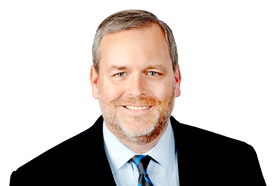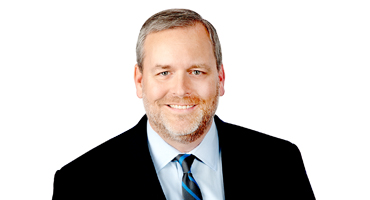Analyzing the financial situation of a healthcare organization is one of its fundamental operations, and doing so correctly reveals truths about the state of a business and clarifies uncertainties. But just tallying up what has come in and what has gone out of a company and assuming things will continue as before is a path to failure.

“All healthcare organizations gather data, run it through their FP&A, EPM or decision support tools and come up with forecasts and plans. What organizations must remember is none of these processes have value unless its leadership uses these results to make difficult decisions and execute.”
Healthcare systems are run much differently even than other service industries—they tend to be less affected by the economy, for instance, but are nonetheless affected by it in unique ways. And while all businesses’ finances can be thrown off course by unexpected events, in the healthcare sector, disastrous events often have the unique effect of increasing business while putting unusually high stresses on the organization to comply with demand.
But even shocks like recessions, natural disasters and—as we now know—pandemics, can be ameliorated by sound, agile financial planning and analysis (FP&A) methods to guide company leadership. But even then, the best financial forecasts are only as good as how they are used.
“All healthcare organizations gather data, run it through their FP&A, EPM or decision support tools and come up with forecasts and plans. What organizations must remember is none of these processes have value unless its leadership uses these results to make difficult decisions and execute ,” said Grant Thornton Healthcare National Managing Principal David Tyler.
Charting healthcare’s future
Labor, patient mix are key

“If the population is growing or declining, or the payer mix changes over time, those differences will influence the revenues.”
The starting point with financial planning is correctly assessing revenues and expenses. On the revenue side, healthcare providers are different from manufacturers, which are concerned with trying to attracting customers to their products. In healthcare, the customer mix is based on the Metropolitan Statistical Area (MSA), and the factors that comprise of the population such as the age and socioeconomic makeup, which will largely predict the overall use of hospitals and other healthcare facilities.
“If the population is growing or declining, or the payer mix changes over time, those differences will influence the revenues,” said Grant Thornton Healthcare Advisory Partner Adrianne Boylen.
On the expense side, much like other service industries, the biggest driver for healthcare organizations is labor. Evaluating the labor market for healthcare, however, is complicated by chronic staff shortages that plague the industry. To compensate for this shortfall, healthcare organizations have relied on contracted labor such as traveling nurse pools, which have increased labor costs.
What is critical to making these assessments is obtaining access to good data from which to build a budget. Accurate and complete data will help guide healthcare organizations in its FP&A processes and inform key drivers such as service and payer mix based on the changing population and/or the need for contract labor, Boylen added.
Healthcare organizations typically use either an annual budget or a rolling forecasting cycle. An advantage of an annual budgeting cycle is that there is more time for an intensive methodology, allowing more thorough organizational buy-in, Boylen said. Everyone is involved and because of that, you get a more complete variance analysis that can lead to better budget decisions.
Rolling forecasting requires more discipline around what line items are open for input to be able to quickly re-forecast and provide the information to leaders to make decisions. In that way, a rolling forecast model can be more responsive to changes in the economic situation. It’s also not unusual for companies to use a hybrid model, an annual budget with quarterly forecasting.
Supporting capital plans
“Often, we want to see a strategic five-year plan, along with capital planning, happen first and foremost because it outlines the overall direction of the organization,” Boylen said. A sound FP&A process is then informed by the strategic plan, and so must be a starting point for any strategic investment.
For instance, if a strategic plan reveals the need for an expansion of a particular specialty wing, the finance department’s FP&A will support what the impact is on the financials, both from the expense and when it will be revenue generating. The financial calculus can work the opposite direction as well, providing the timing and direction for reducing the organization’s footprint if increased outpatient care is the goal.
FP&A also supports overall modeling changes. If a healthcare system is moving towards a value-based care model. Sound FP&A methods will help, and even determine, how to build out an organization’s primary care physician network to support it, Boylen said.
Adapting when shocks occur
Disasters will eventually happen
Of course, the issue all businesses face when planning for expected events and situations is reacting when unexpected events happen. Acts of nature such as floods and hurricanes can mean catastrophic losses for businesses, but healthcare organizations have different pressures during these events because of the sudden influx of patients they receive. If a hospital is in the path of a natural disaster, moving patients elsewhere will be a sudden unexpected expense. “First and foremost, it really comes down to patient care and making sure the patients are safe,” Boylen said, “then worry about the finances later.”
But when that day comes, Boylen said it’s important to first assess the situation and understand what steps need to be taken. Then determine what the financial impacts are. If you've lost major floors of a hospital in flooding, for example, are there layoffs that have to happen for the organization just to survive, knowing that many employees will be adversely impacted by the disaster themselves?
Determining as quickly as possible the extent of the actual budget impact, balanced by what government aid is expected, is the foremost financial priority. From there, balanced financial reassessments can be made that preserve the most jobs, satisfy creditors and ensure the continued success of the organization.
What was learned from COVID?
A recent natural disaster of a different kind was the COVID-19 pandemic, where a disease unknown in the summer of 2019 became the most significant health issue worldwide shortly into 2020. While scientists had long predicted that current mass global travel could be the medium for a worldwide pathogen, financial planning based on actual statistics could not have reasonably set aside resources for this event. Dealing with pandemic strained nearly every operational function of healthcare organizations and most are still reckoning with the shock in terms of patient care and outcomes, lost labor and depressed finances.
With COVID-19 still mutating into variants, and the possibility of another pandemic always possible, financial planners can assess how their predictions can consider these “known unknowns.” Boylen said while the most organizations already have business continuity plans in place, an organization can be more nimble by defining what are fixed versus variable costs.
“If you need to take out cost from of organization quickly or adjust it, you know what those variable costs are, and you can react to that appropriately.” Boylen said. Labor is healthcare’s most significant variable cost, and staffing was adjusted during the pandemic when elective surgeries were less desired, allowing staffing to be adjusted to accommodate.
Short-term fixed costs such as rent were also re-examined when many healthcare system back-office staff were able to work from home, rendering leased office space less desirable and a possibility for a cut. A new pandemic, however terrible, would likely lead to similar circumstances and thus similar responses.
Using data for better predictions
Driver-based and AI modeling
An organization’s FP&A process ultimately is a guide to how to quantify and use the resources available, and expecting the unexpected means considering different approaches to FP&A modeling. A rolling forecast has already been described, and the key to making this work is to make sure to involve all relevant staff at the appropriate time.
Another method, driver-based FP&A modeling, starts with both identifying and ranking key performance indicators (KPIs) and then basing a financial plan on addressing those KPIs that “drive” the business’s success. Healthcare KPIs should include drivers such as patient demographics, payer mix, the community’s economic health, the anticipated mix of services or even environmental factors, Boylen said.
Choosing and valuing the appropriate drivers to use should be a particular focus of organizational leadership, Boylen said, as the process works when the KPIs are the same across the organization. “By identifying and budgeting to address those, you can understand what's driving changes to your bottom line,” Boylen said.
On the technology end, AI and machine learning are increasingly being used in financial forecasting. “Many organizations have historically relied on Excel, so when you're able to incorporate AI and/or machine learning into that process, you can look at historical trends and what's driving the actual numbers,” Boylen said. Using that information to see historical trends can help future planning. The historical information will provide the baseline from which an organization can then layer on known changes or investments.
Insights on FP&A in other industries
ARTICLE
ARTICLE
“If there are changes to a service line, for instance, you can then layer that on rather than starting with a ‘blank sheet’ each time,” Boylen added. New AI capabilities can use historical data to identify the financial drivers via data experimentation. This process allows organizations to test hypotheses and identify which metrics best drive the business.
While at first glance, FP&A work in healthcare may seem to be a matter of following well-known procedures, valuable financial planning has been challenged by unexpected events while being advanced by both technology and more sophisticated modeling. To gain the perspectives needed to find the right FP&A model, healthcare companies can find value with the help of third-party advisors.
Contacts:



Partner, Technology Modernization
Grant Thornton Advisors LLC
David has 30 years of experience primarily in the health system and health plan areas.
Atlanta, Georgia
Industries
- Healthcare
Service Experience
- Advisory Services


More healthcare insights

No Results Found. Please search again using different keywords and/or filters.
Share with your network
Share